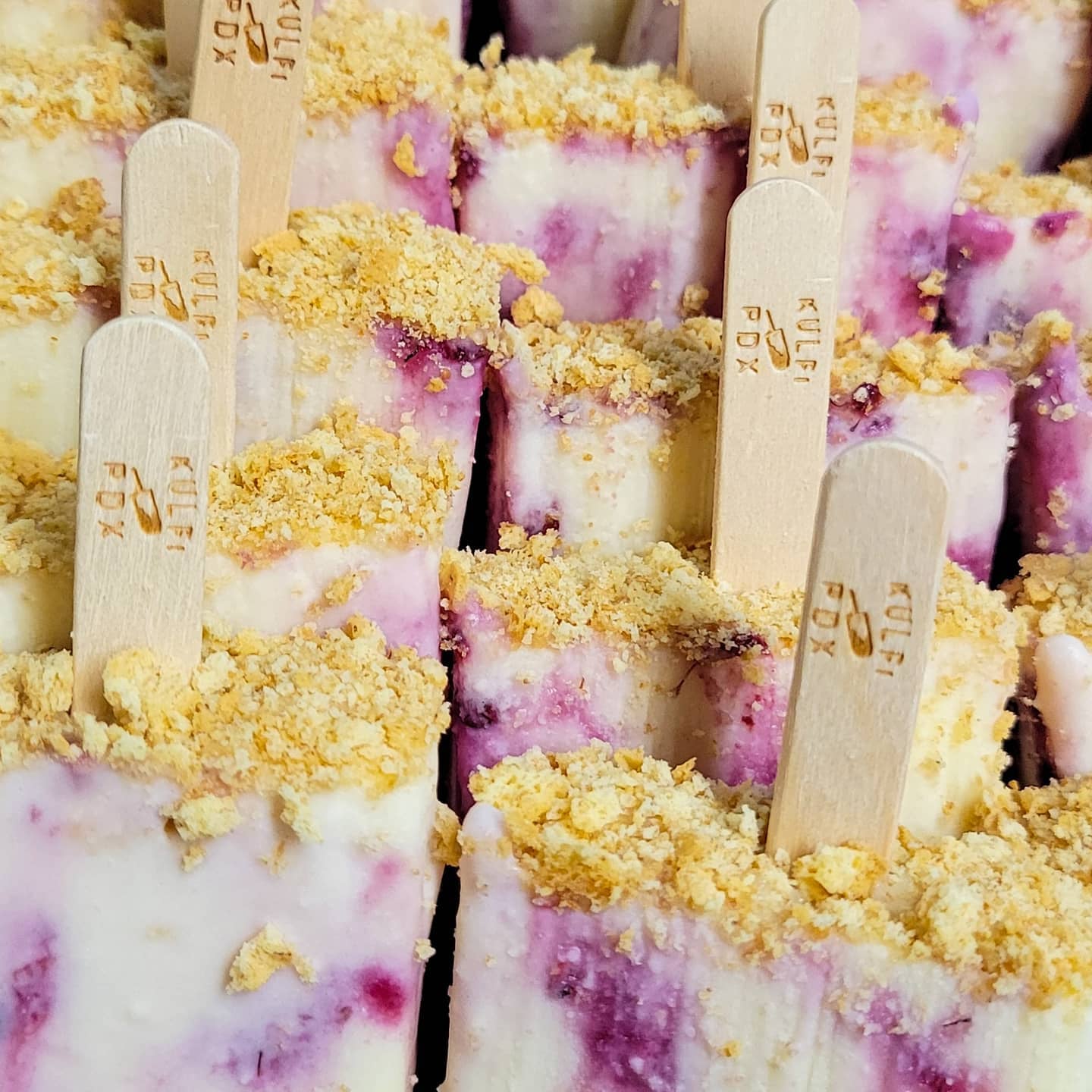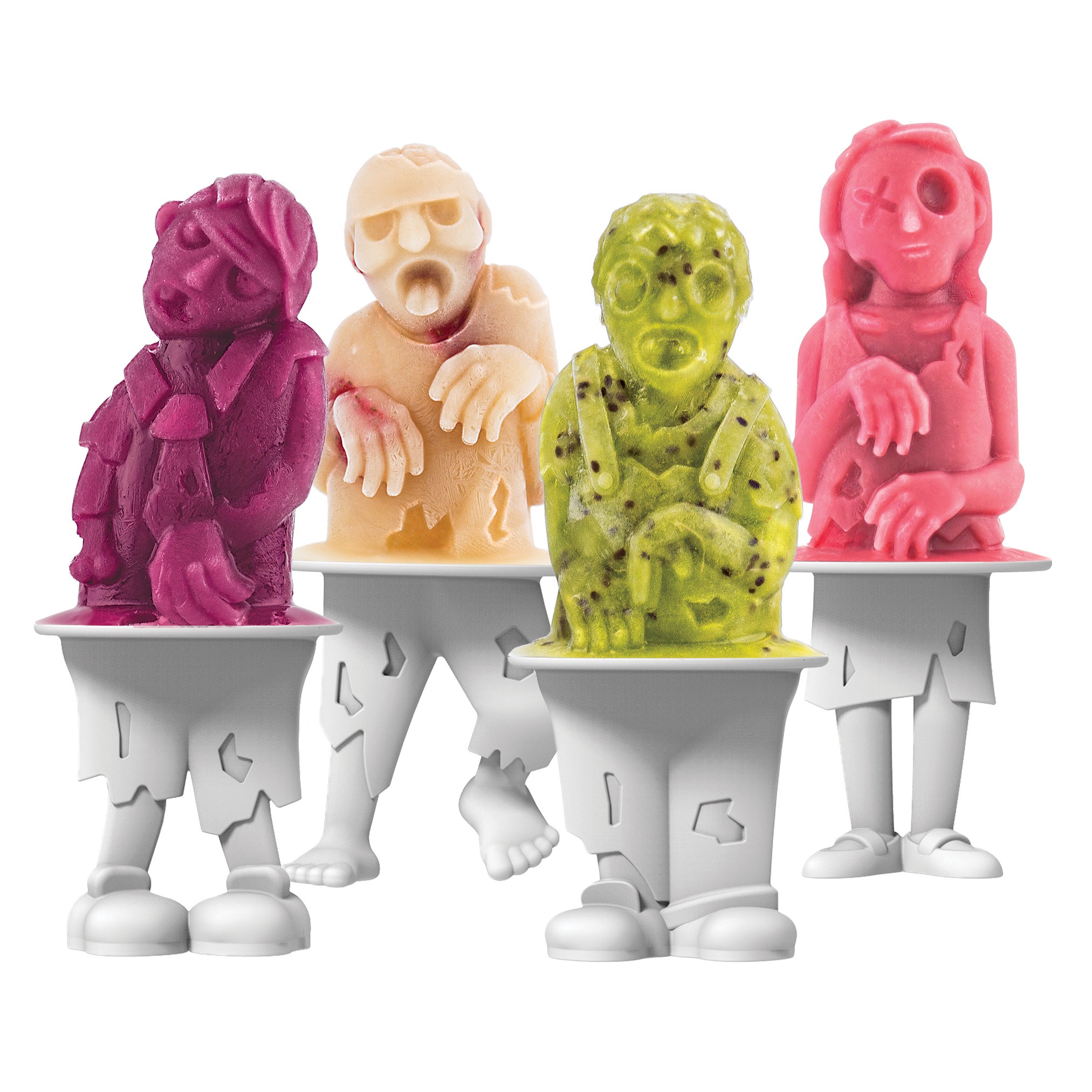
The popsicle is a state of mind, a way of being, a worldwide delight expressing flavors and cultures. Free your spirit and prepare your freezer.
I love popsicles. This fact should perhaps be gotten out of the way up front—this edition of Rabbit Hole will be no evenhanded journalistic exercise of restraint and neutrality, published here at the very apex of popsicle season in America, a time when the thoughts of the nation, young and old, turn to all things freezable. They taste incredibly good, popsicles, but moreover, they are both an optical illusion and a Rorschach test—personal and meaningful and much bigger than they appear in the mirror.
The entirety of the farmers’ market can be turned into a popsicle. The wildest idea in your most intimidating cookbook, the sweet of your dreams, those Proustian flavors of childhood waiting to be recaptured: all of these can be poured into a mold, plunged with a stick, and frozen overnight. Give me creamy pops, puddin’ pops, sweet and spicy icy pops, savory pops, subtle pops, lime and lemon muddle pops! I firmly believe that the popsicle is a mindset, a way of being, a spiritual life practice. All you need are a couple of tools, bases that serve as the building blocks of flavor, and an open mind. Once you unlock the popsicle within, you come to realize that all the world around you is waiting to be frozen.
These are your popsicles, and you are in charge.
It’s best to start with inspiration. I am blessed to live in the city of Portland, Oregon, where popsicle options are overwhelmingly plentiful and a variety of cultures and traditions are expressed via the popsicle métier. Within ten minutes of my home, I can visit Kulfi PDX, Gagan Aulakh and Kiran Cheema’s South Asian dessert shop offering kulfi popsicle flavors like malai (caramelized milk), mango lassi (which can be dipped in white chocolate), and thandai (cardamom, fennel, saffron, and almond); Ice Queen, founder Rebecca Smith’s deeply rooted neo-paleta parlor, with flavors like oatchata (oat milk horchata), strawberry switchblade (a vegan take on the ice cream truck favorite), and pickle, which represents this Jewish man’s freezer dream of frozen brine with a sliver of dill cuke embedded inside; and Coquine Market, the next-door mercantile of Katy Millard’s lauded Pacific Northwest bistro, with a freezer full of cheffy popsicles like blood orange creamsicle, Oregon strawberry lime, and craft chocolate puddin’ pops with the chef’s own cookie crumble.
Duly roused by the popscene around me (especially that briny, electrolytic, puckering pickle popsicle at Ice Queen—Lord, is it good), I set out to augur the art of making popsicles at home. This is a very good way of being, because it allows you to incorporate pop-psychedelic ways of being into your daily kitchen practices. A few key tools will aid your quest.
Popsicle molds to hold the cold
The internet overfloweth with popsicle molds of varying sizes, shapes, and constituencies, from cheap-and-easy silicone numbers to more professional metal sets, with a corresponding increase in functionality and price.
The housewares brand Tovolo offers an appealing selection of silicone molds, available in a range of shapes and sizes from standard to whimsical (a popsicle shaped like a unicorn, for example), all for around $20. Other brands like MEETRUE and YSBER offer comparable products at a slightly lower price point. Silicon molds offer a lot of advantages in that they are easy to clean, easy to freeze, and easy to extract your finished pop from the mold. Once you get into the more esoteric shapes—like a pineapple or a star—you begin running the risk of form inhibiting function. (No one likes a drippy pop.) But I do rather love the idea of, say, buying a popsicle mold shaped like a slice of watermelon and using it to make a home version of a salty and sweet watermelon Tajín pop (more on that in a moment).
There’s also a world of metal popsicle molds, which are a bit more professional in form but remain easy and practical to use for home chefs looking to take their popsicle practice seriously. The Onyx brand stainless steel mold tray is a great place to start, offering six connected freezing chambers and a helpful supply of wooden sticks. Popsicles in metal molds freeze to a pleasingly solid texture and temperature, and they just sort of feel more like the real deal than their silicone brethren—which are a touch more flimsy, in my experience, and don’t seem to freeze to quite the same level of solidity. But they cost more—the Onyx is $40 at most retailers, and there’s also the Vevor, which makes 20 pops at a time but costs closer to $60—and it can sometimes be challenging to extract your finished pops from these metal molds (a splash of warm water helps).
Popsicle bases (a few use cases)
Are you into creamy popsicles, or puddin’ pops, or refreshing water-and-fruit-based treats? There’s no wrong way to popsicle, but every ingredient choice yields a different frozen result. In my house, we really like starting with a dairy base from the lassi / Yakult / “drinkable yogurt” constellation. Ronnybrook Farm’s drinkable yogurt is the platonic ideal, as are the Karoun and Gopi brands. Gopi’s mango lassi drink requires zero in the way of additional adornment, save for perhaps a crack of fresh cardamom from your heaving modern spice rack. You can get as weird here as you’d like, with your favorite custard, or a coffee pop with condensed milk, or a mix of fresh blueberries with creamy smetana from the Russian grocery store.
There is the universe of water popsicles, from which much of the Mexican paleta tradition is derived (there are also many milk-cream-based paletas, including my favorite paleta of all, paleta de coco). Water pops are essentially a puree of fruit, such as pineapple or lime, with water and sugar. These are the classic cool-down flavors most often associated with summertime popsicle enjoyment. The simplest recipes here involve making an easy simple syrup with a one-to-one ratio of water and caster sugar (100 grams of each is perfect), then mixing with a fruit puree—designer strawberries with a little fresh lime juice, maybe, or fresh and profoundly in-season Oregon marionberries, which are just starting to pop right now. You can blend that puree down to a perfectly smooth consistency or leave it a little chunky for some texture in the pop. The world is your popsicle.
Popsicle flavors to infinity
This is where we get into something metatextual—the divine, the godhead, that which cannot be spoken fully but is nonetheless felt deeply. These are your popsicles, and you are in charge. How about an avocado popsicle, built on a recipe for Vietnamese sinh tó bo, in which avocado is blended with condensed milk, whole milk, and ice? That same combination can be easily adapted toward jackfruit, mung bean, durian, or lychee, all of which make for glorious pops.
Or maybe you’ve got access to summertime peaches and fresh cherry bomb peppers? A little spice is a welcome addition to a fruity popsicle situation, so long as it’s clearly labeled to not accost sensitive palates. The aforementioned watermelon Tajín is particularly welcome here—the sweetness of the fruit offsets the salt and heat of the spice blend, arriving at something profound. In all these cases, seasonality is your friend, and the farmers’ market cycle should be embraced: rhubarb pops in late spring, pumpkin pops in early fall, vanilla ice cream and mince pie pops with the Christmas leftovers in January, and round we go.
My dream popsicle—the very essence of my being in popsicle form—was achieved quite by accident in researching this Rabbit Hole column. There I was, happily finishing off a batch of my all-time favorite dessert, Fergus Henderson’s wonderfully wobbly and unctuous rice pudding, as described in The Book of St. John. Leftovers aren’t typically an issue when it comes to this pudding, but I found myself with a surfeit of the stuff and took a risk, packing it carefully into a waiting popsicle mold with the addition of a bit of yellow raspberry puree. The rice retained its constitutional bite once frozen, but the flavors were only amplified, the vibrant acidity of the berries melding with the creamy cooked milk and subtle bay leaf. To me, this is the perfect popsicle. What will be yours?
Rabbit Hole is a column that digs deep into nodes of culinary inquiry, from the recipes and products that expand our home routines to the food culturalists and content creators that make us hungry and curious. Along the way, we’re exploring the ever golden gastronomic moment in the 21st century: never boring, always peckish.
